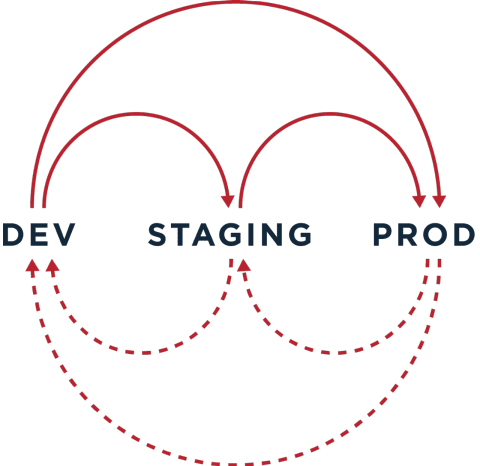PingCentral Makes Self-Service IAM a Reality with Simple Templates, Workflows
Ping Identity is enabling a ‘self-service’ approach to help overstretched IT and security admin teams meet security and access management requirements.

Ping Identity is enabling a ‘self-service’ approach to help overstretched IT and security admin teams meet security and access management requirements.
The newly-released PingCentral allows security admins to provide pre-set workflows and standardized templates to business applications teams to safely and reliably ensure their work complies with IAM (Identity and Access Management) tasks.
Specifically, PingCentral’s “delegated administration” lets IAM experts empower teams to integrate their applications, workflows and APIs into their enterprises’ centralized identity services.
Ping’s vice present for product management Loren Russon said PingCentral was developed to ease burdens on IAM admins, who often struggle to manage the high volume of requests required to keep application teams functioning.
“By simplifying fundamental IAM processes and enabling non-technical business teams to manage standard administrative tasks, PingCentral enable organizations to save valuable time and resources while strengthening their overall security posture,” Russon added.
PingCentral can also accelerate the onboarding of new apps.
Authentication is often one of the final steps to launching an app, and it’s only after APIs are defined that the identity security teams get involved in the critical security steps.
In contrast, PingCentral can accelerate the rate at which new apps and APIs can get to market because it makes it easier for developer teams to build and test authentication in their apps sooner – without waiting for the IAM experts.
How PingCentral Supports ‘Delegated Administration’ by non-IAM Experts
The key to PingCentral is its focus on its approach to getting IAM admins and app and business app teams on the same page. PingCentral does this via a set of well-designed “delegated administration” features that enable non-IAM users to rapidly onboard their own resources.
Among some of PingCentral’s more notable capabilities are:
Delegated Administration Portal: It contains a self-service, user-friendly interface and template workflow that allows IAM administrators to create, update and deploy standard templates for single sign-on (SSO) and authentication.
Orchestration Engine: PingCentral automates promotions across the application development and deployment lifecycle by maintaining configuration across environments.
Central Monitoring System: It provides visibility of application connections, clients and environment tiers from a single screen, and permits IAM and business application administrators to assign and/or update resource ownership.
Lifecycle Management: It also supplies an audit trail across the lifecycle of client configuration changes and promotions—so administrators always know who has done what and allows for an easy reversion back to previous configurations as needed.
Taking all these features together, PingCentral provides 'self-service' to business app teams via simple workflows and standardized templates, Russon added.
Further, by enabling self-service through its approach to “delegated administration,” PingCentral free up resource-constrained IAM teams to do more with less, he added.
Because application teams can vary in their knowledge of IAM, PingCentral uses a simple template builder interface to IAM experts, who, in turn, can provide their users a set of standard templates for different resources and authentication types. As a result, IAM experts are in control of creating standardized resources to their application teams, which keeps these users on track and avoids errors.
Here are more details on how PingCentral’s features enable ‘self-service’ to non-IAM users via its ‘delegated authority’ approach:
Centralizes IAM operations: PingCentral is a converged operating portal for Ping software; it allows resource-constrained IAM teams to do more with less.
Empowers ‘self-service’ app-to-IAM integration: PingCentral gives IAM admins a flexible interface, which lets them build authentication and single sign-on templates that app teams can easily use and follow.
Automates promotions across environment tiers: Because configuration changes often need to be propagated across an entire app development and deployment pipeline, PingCentral’s orchestration engine automates such promotions across application environment tiers.
Provides visibility into all apps and environments: PingCentral gives IAM and app administrators a ‘snapshot’ of their managed OAuth and OIDC clients and SAML connections across all environments on a single screen. This allows IAM admin to assign and update resource ownership across the entire SSO infrastructure without switching between different instances of Ping software or authentication type screens.
One IAM expert sees much promise in the PingCentral approach.
Dan Ricke, manager, information security at BlueCross BlueShield of Tennessee, said in a statement: "We see enormous potential for PingCentral's ability to positively impact our organization. A range of staff roles will be able to collaborate on and work in this solution regardless of IAM sophistication, speeding up the connecting process and saving time for the identity and access management team."






